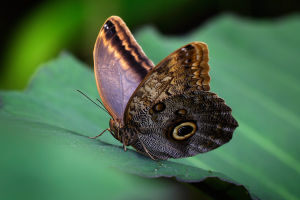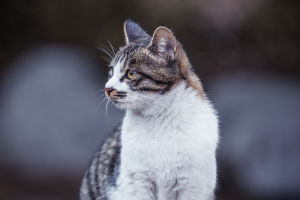In its metamorphosis from the common, colorless caterpillar to the exquisite winged creature of delicate beauty, the butterfly has become a metaphor for hope.Across cultures, it has become a symbol for rebirth, for the triumph of the spirit and the soul over the material world.
From their brightly colored bodies to the effortless motion that seems in sync with some unheard symphony, how much do we know about them?
1. Butterfly wings are transparent
Before you feel the need to schedule an eye exam, let us explain. The wings of a butterfly are covered in a multitude of miniature scales –thousands of them. And those colors you see when a butterfly flits across your yard are the reflection of various colors through the scales.
The wings themselves are made up of a protein called chitin, which is the same protein that forms an insect’s exoskeleton. And much like an exoskeleton, chitin is transparent. You’ve learned something new already!
2.Butterflies use their feet to taste
If everything up until this oint was already a part of your existing butterfly knowledge, this fact may come as a curveball. However, if you think about it from the butterfly’s point of view, it isn’t that unusual.
A butterfly’s daily activities consist of eating and mating, both of which require landing – even if it is only briefly. When food is the priority, those taste receptors help the butterfly locate the right plants and the key nutrients it needs for survival.
Although many people wonder what it means when a butterfly lands on them, the truth is that it’s probably just hungry.
3.Butterflies only live for a few weeks
The average lifespan of an adult butterfly is roughly three to four weeks, however, the entire life cycle can last anywhere between two and eight months.
As with anything, there are exceptions to the rule. At least one species of butterfly lives for approximately 24 hours, while some migratory butterflies, like the North American Monarch, can survive for nearly eight months.
4.Butterflies have a liquid diet
We mentioned earlier that butterflies like to eat, which is true. What we didn’t include at the time is that their source of food is exclusively liquid.
In fact, they simply don’t have the necessary apparatus for chewing. Using their proboscis, which functions in the same way you or I might use a straw, butterflies drink nectar or some other variation of liquid sustenance.
5.Enemies of butterflies
There are many different creatures that make butterflies part of their diet. While most humans can not even imagine attempting to eat a butterfly, there are many animals that need to make a meal out of a butterfly to survive.
Some of the common predators of butterflies include but are certainly not limited to: wasps, ants, parasitic flies, birds, snakes, toads, rats, lizards, dragonflies and even monkeys!
A few of the other animals that are constantly adding butterflies onto their menu list are frogs and spiders. These predators eat butterflies as butterfly eggs, caterpillars and adult butterflies.
6.The largest butterfly in the world
Monarch butterfly is the largest butterfly in the world.During its lifetime, an individual Monarch butterfly will have eight completely different outer surfaces in the monarch butterfly life cycle: each in a different size, shape, and color combination. The monarch butterfly life cycle is so quick, four generations will typically complete the life cycle in a year.
Because most butterflies fly for up to two months, the generations overlap to some extent. The final generation have a life span of up to eight months. Hibernation is when an animals body systems slow way down during the winter. It is almost like a long nap!


